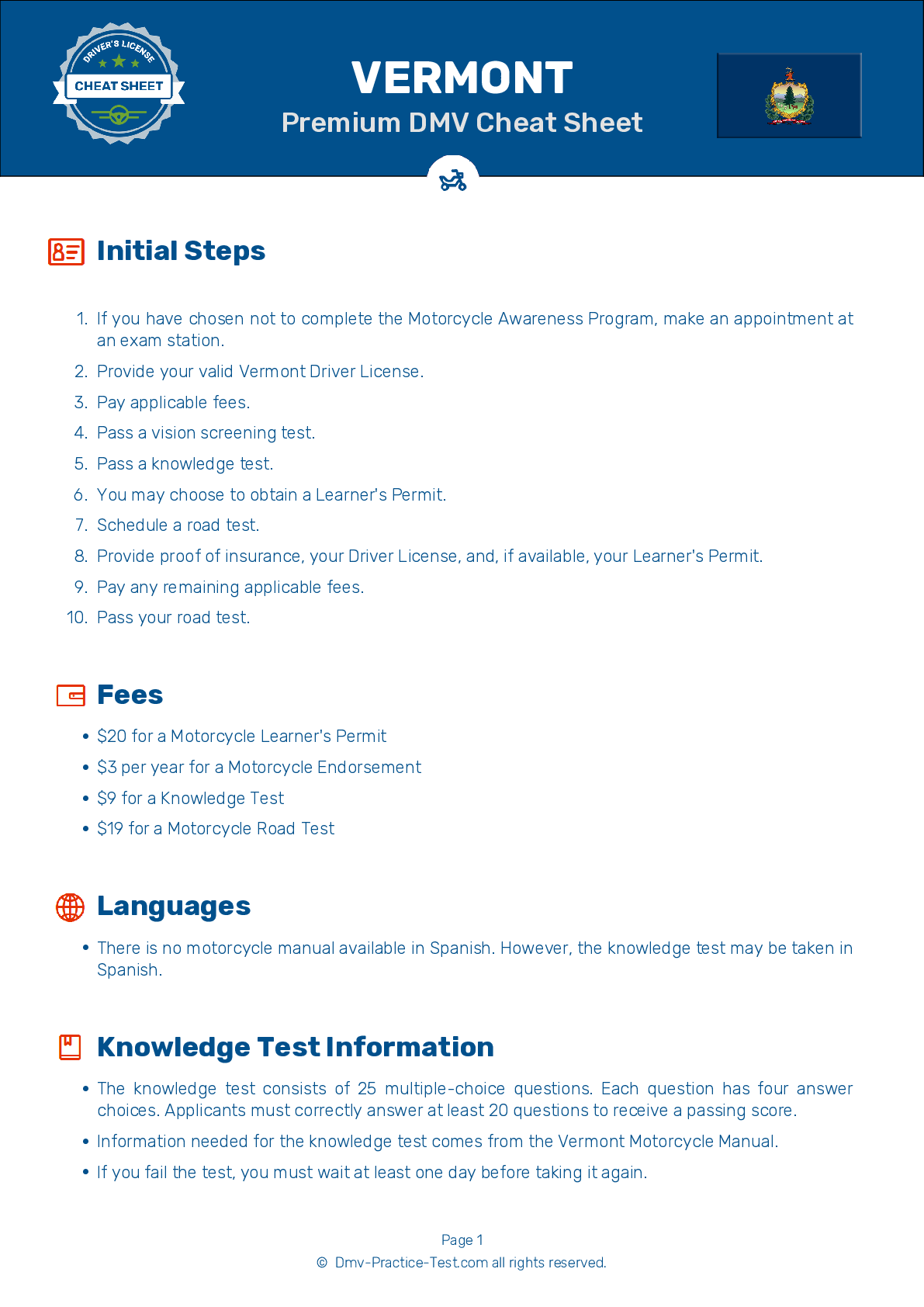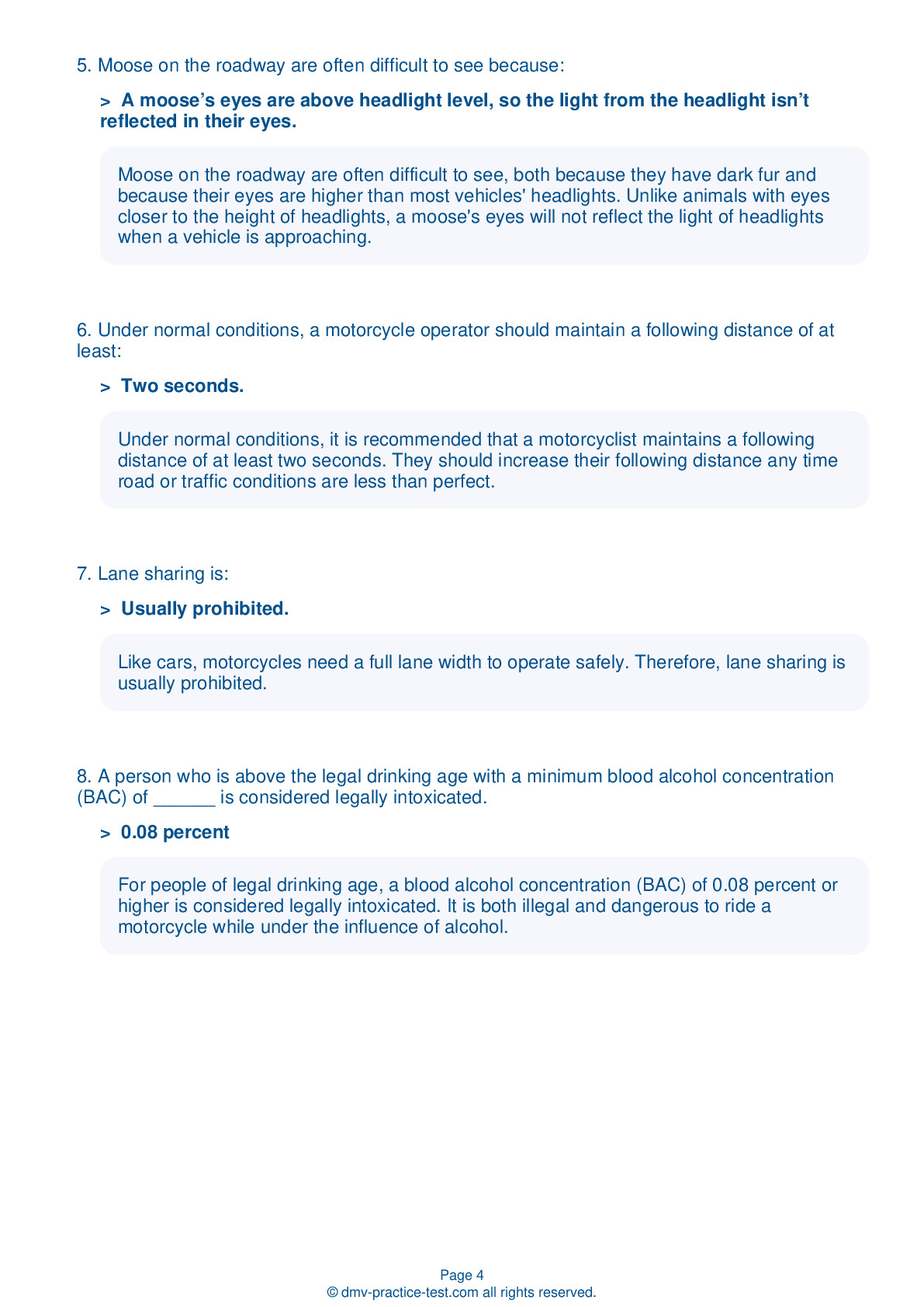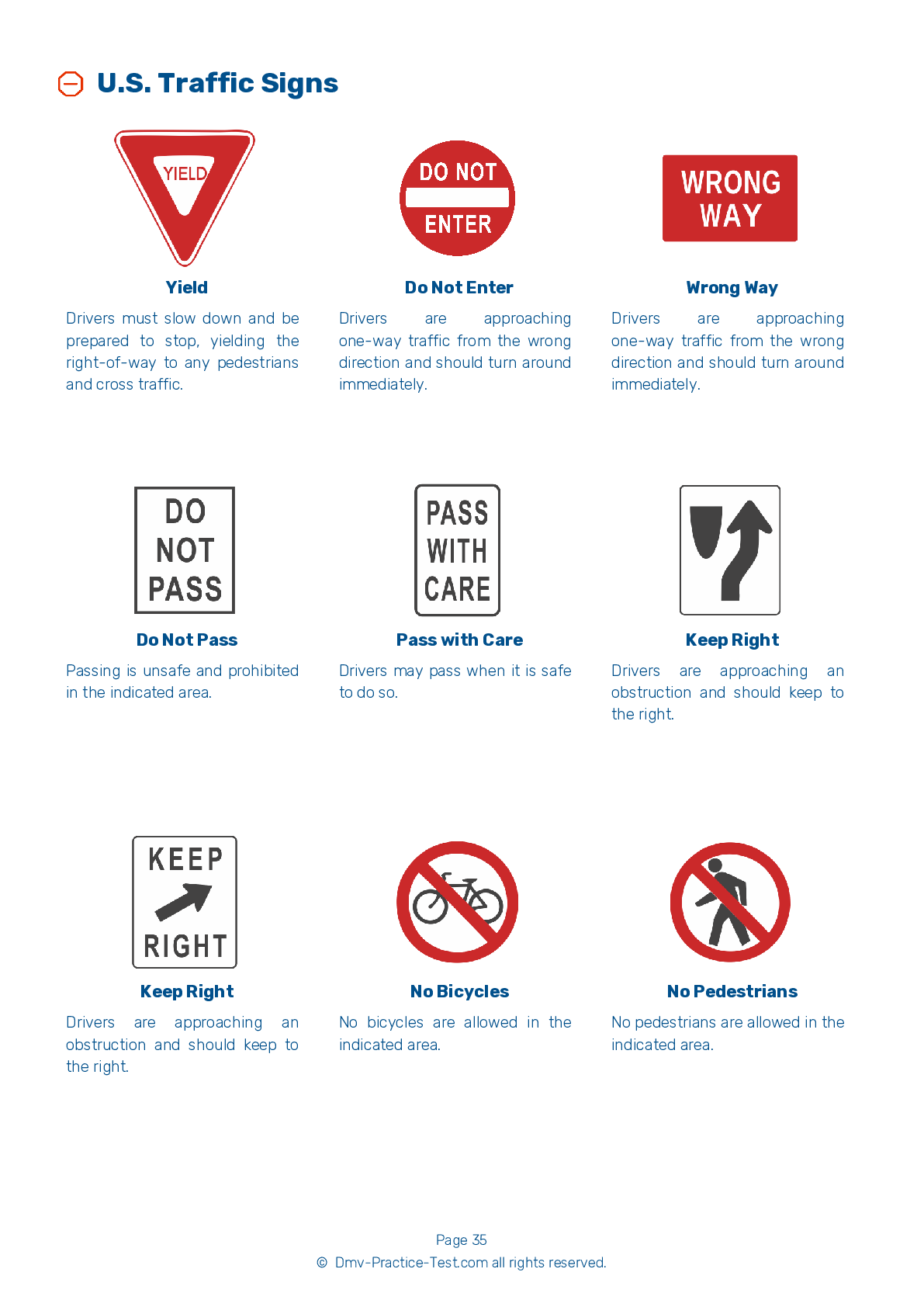Motorcycle Test | License VT 2025 | FREE Online Practice! #6 Page 4 of 4
Take this FREE motorcycle test (license in VT 2025) to check your knowledge of the road rules. To improve your results, download a motorcycle handbook online, study theory, and practice for free on our website. Still worried about how to get a motorcycle license in Vermont in 2025? Check our website for more sample tests, train as much as possible, and boost your grades!
19 . Your lane position should do all of the following, except:
A properly chosen lane position should provide a number of benefits, including an increased ability to see others and to be seen. It should help you avoid wind blasts, other drivers' blind spots, and surface hazards. Your lane position should discourage other drivers from trying to share your lane and provide you with an escape route, should a hazard arise.
20 . When riding on a slippery surface, you should not:
To safely ride on a slippery surface, you should reduce your speed, avoid making sudden movements, and use both brakes if you need to brake.
21 . To provide the best protection, a helmet should:
To ensure you are getting the best protection, you should choose a helmet that meets U.S. Department of Transportation (DOT) and state standards. It should fit you snugly all the way around and have no obvious defects, such as cracks, loose padding, or frayed straps.
22 . When you ride a motorcycle, you should:
When turning, look through the turn to where you want to go by turning only your head. Keep your knees against the gas tank to help maintain your balance while turning. Your arms should be slightly bent any time you are holding the handgrips.
23 . If no traffic is present when you are taking a curve, it is a good idea to start:
If no traffic is present when you are taking a curve, start on the outside of the curve to increase your line of sight and the effective radius of the turn. As you turn, move toward the inside of the curve. As you pass the center of the curve and prepare to exit, move back toward the outside position. Remain aware of changing road and traffic conditions and adjust as necessary.
24 . Before riding, a motorcycle operator should check the clutch. A properly working clutch should feel:
Check your clutch and throttle before riding your motorcycle. The throttle should snap back when you let go and the clutch should feel tight and smooth.
25 . Drivers on an entrance ramp may not see you on the highway. What should you do to help an entering driver merge safely?
To reduce the risk of a collision, always allow merging vehicles plenty of space to safely enter traffic. Change lanes away from the entrance ramp if there is room to do so safely. If there isn't another lane available, adjust your speed to open up space for the merging driver.
See the exact questions that will be on the 2025 Vermont DMV exam.
99.2% of people who use the cheat sheet pass the FIRST TIME
Jeneen was tired of paying $5/gallon. She got herself a scooter that required the motorcycle license. She studyed the motorcycle test cheat sheet and passed her test the next day!
Christopher tells us how he knew nothing prior to obtaining the motorcycle study guide, and he only got one question wrong because he clicked on the wrong answer by mistake.



